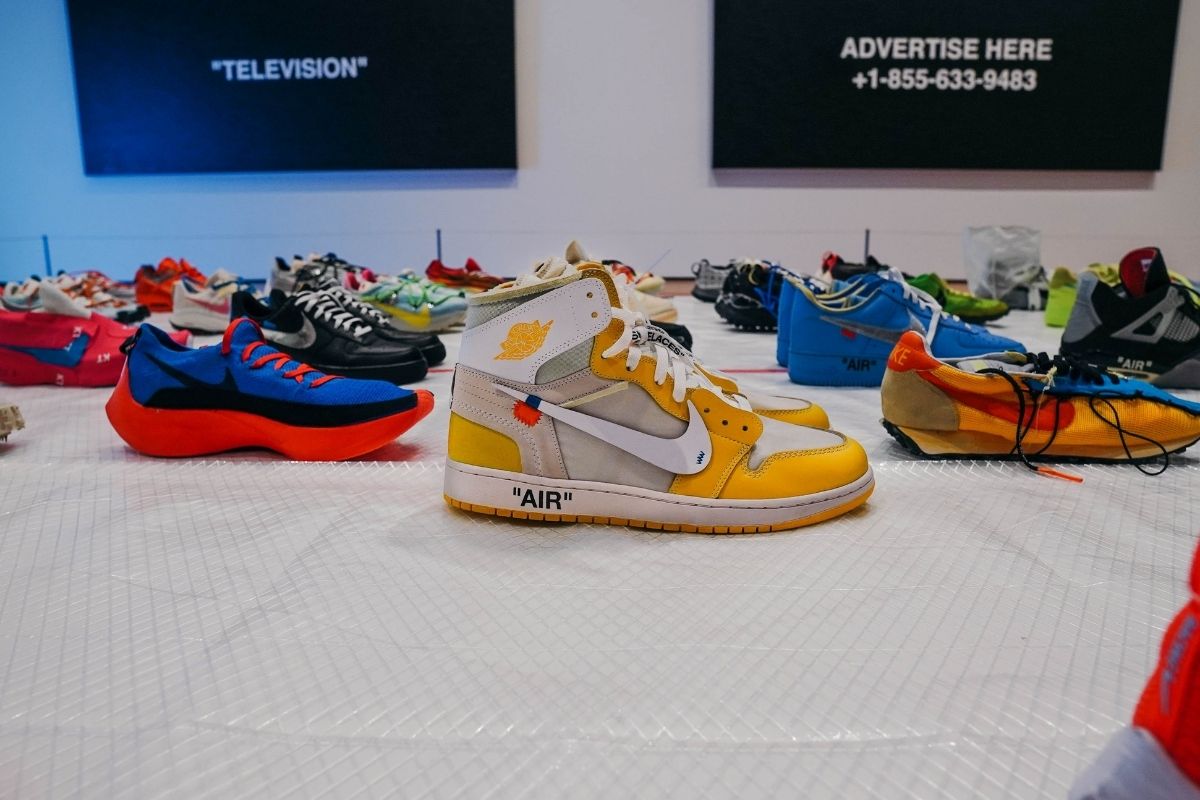Online Sneaker Education: Sneaker Culture in Film and Video
This history of sneakers in film and videos really dates back to Spike Lee movies like “Do the Right Thing,” and “She’s Gotta Have It.” Lee helped bring sneaker culture to the forefront of film. There is one iconic scene in the movie “Do The Right Thing” where the character, Buggin Out, is wearing a pair of Air Jordan 4s. During this scene, his sneakers are run over by a passing bicyclist. This moment in the movie is, still to this day, one of the most powerful sneaker scenes in film history.
The famous movie scene not only displayed the Air Jordan 4 sneaker on the big screen, but it also exposed the idea of someone getting angry about their shoe getting scuffed. Afterward, Buggin went home and tried scrubbing out the scuff with a toothbrush. This is a very real feeling that all sneakerheads have felt. Spike Lee was able to bring this emotion to film because it was something he experienced himself.
This exposure led to Spike Lee, Nike, and Jordan forming a longer relationship. They worked together to develop stylized shoe commercials that resembled films. Their partnership was a starting point for sneakers in film and pop culture. After that, sneakers played a significant role in movies like “White Men Can’t Jump,” “Blue Chips,” and “Like Mike.”
If it weren’t for Spike Lee and his movie “Do The Right Thing,” we wouldn’t have the sneaker video content that we have today. Sneakers used to play more of a complementary role to performance, but nowadays, sneakers have become more of a main attraction. There is sneaker video content all over the web, on YouTube, and on Instagram.
Sneaker Industry
Sneakers have always been a big part of sports like basketball. However, these sneakers cater to a specific audience of people already predisposed to them. For example, any basketball fan that saw Michael Jordan wearing Air Jordans already knew about them, even if it was just peripherally.
In “Back to the Future,” Michael J Fox wore a pair of futuristic-looking Nike Macs that were almost the costar of the film. The shoes, and that particular part of the film, were both created by famous Nike designer Tinker Hatfield. This unique project was an excellent opportunity for a man who is creative on many levels to flex in an entirely different lane.
A Shift in Sneaker Culture
This shift in sneaker culture created an area in film and video where people would notice sneakers that they usually wouldn’t. Sneakers are often viewed as just a necessity. Just something that people have to buy their kids every year that often comes with a surprising price tag. But when you see something amazing like the Nike Mac in the movie “Back to the Future,” it raises awareness. Those shoes become so much more than just another piece of a school uniform.
Great Scott!
Sneakers like this have a cultural context to them. They represent this importance to another generation that people may not recognize. The futuristic sneakers designed for the movie “Back to the Future” became the future of shoes in reality when Nike created and sold the light-up, self-lacing shoes based on the film.
The cross-over commercial for Nike’s new Back to the Future-inspired sneakers launched in 2011. In the commercial, the shoe store employee shows the futuristic sneakers to the athlete customer. He’s talking about how the shoes light up when Doc shows up and asks if the sneakers are self-lacing. The employee tells him that they will be adding that feature in 2015.
Sneakers in Television
Popular television series like “The Fresh Prince of Bel-Air” and “Seinfeld: were iconic sitcoms, but they were so much more to sneakerheads. A true sneakerhead will never forget Will Smith, standing in the empty living room wearing his all-white Jordan 11s in the last episode of “The Fresh Prince of Bel-Air” or the episode of Jerry Seinfeld when he put his feet up on the coffee table, revealing his Air Jordan 7s.
These were all vital moments in the sneaker culture, and they happened before the internet was a big thing. Now websites like Complex make lists of the best sneakers aired on hit TV shows, and sneaker brands tell stories around these pop culture moments.


